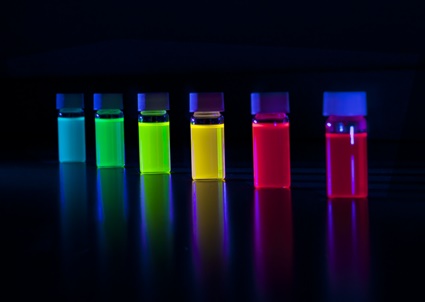Comparing the Peak Brightness of OLED and QD Displays
Top of the range display technologies tout High Dynamic Range (HDR) as one of their key selling points, alongside 4K resolution and wide color gamut (WCG). It refers to enhanced dynamism across the full spectral output of the display, enabling content to appear more realistic than the quality of content that outmoded liquid crystal display (LCD) and cathode ray tube (CRT) technologies can produce.
In general terms, HDR is defined by content with superior contrast performance and a wider representation of the visible wavelengths of light. Reproducing these qualities requires display technologies with improved light output or luminance which is typically expressed in terms of candela per square meter (cd/m2). In the commercial display sector, the non-SI unit for light output is nits and the maximum number of nits a TV can produce is known as its peak brightness.
Organic light-emitting diode (OLED) and quantum dot (QD) displays are regularly marketed with peak brightness exceeding 800+ nits. This does not mean that a QD display, for example, generates light of such enormous intensity always, nor equally across the screen. Peak brightness determines the maximum light output capacity of an OLED or QD display within a frame or scene, supporting enhanced brightness and contrast ratios across a dynamic image.
The Peak Brightness of OLED Displays
The brightness benchmark for HDR TVs is set at 1,000 nits, but an OLED display can meet the criteria for reproducing HDR content at a light output of approximately 540 nits. This is due to the self-emissive nature of the organic diode and the elimination of the LED backlight. OLED displays can precisely reproduce dynamic content with technically infinite contrast ratios from pixel-to-pixel. This meets the secondary standard for HDR certification which requires a reduced peak brightness alongside a nits black level of >0.0005.
Overall, OLED displays represent significantly decreased peak brightness compared to LCD and QD displays due to the lack of a dedicated light source. Organic diodes generate their own light when an electrical current is passed through the diode array. This provides superior efficiency but inferior light output, a fact that is mostly mitigated by the unmatched black levels of the technology.
The Peak Brightness of QD Displays
The current generation of QD-LED displays still requires an integrated light source such as a backlight of LEDs or edge lighting to excite the photoemissive nanocrystals within the LCD matrix. Multiple technologies are used to reduce the impact of white or blue LED light affecting the output of neighboring pixels, including color filters and cutting-edge local-dimming. This is used in conjunction with the best peak brightness currently available across all display technologies. QD displays can deliver brightness levels of up to 2,000 nits, providing some of the most vivid imagery ever reproduced on commercial TVs.
OLED and QD Displays with Avantama
Avantama is the leading supplier of Perovskite QDs for application in the display sector. We are specialists in solution processing of printed electronics, offering a fully-tailored service for formulating nanoparticle dispersions suitable for a range of printing methodologies.
If you would like to read more about the capacities of current and emerging display technologies, try: Comparing the Color Gamut of QD and OLED Displays. Otherwise, contact us for any more information about our OLED or QD display technologies.

